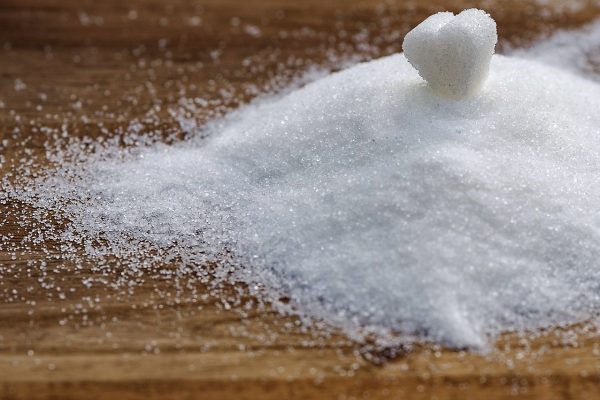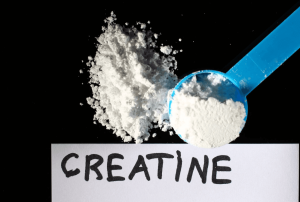Sugar. We hear so much about it. Are all sugars bad for us? White sugar? Brown sugar? Added sugar? Natural sugar? Should you avoid it all? This longer article breaks down the science!
Understanding Sugar Molecules
To understand sugars, it is important to get the terms right. The best way to go about this is to understand that CARBOHYDRATES are all made up sugar molecules. Sugar molecules are the building blocks of carbs. The smallest sugar molecules which you need to be aware of are “glucose” “fructose” and “galactose”. These make up most of the carbs we eat on a daily basis. For example:
- Paring glucose to fructose gives us sucrose: classic white table- sugar, also found in honey and corn syrup
- Paring glucose to galactose gives us lactose, the carb found in milk- products.
- Lining up long chains webs of glucose gives us starch, the carb found in found in grains, wheats, legumes, potatoes and vegetables.
How Does Your Body Process Sugar?
Carbohydrates are broken down in the gut into the smaller sugar molecules “glucose”, “fructose” and “galactose”, so that they can be absorbed into our blood. To get sugar from the blood into our cells to use as energy, an organ called the pancreas releases the hormone insulin into the bloodstream. If you are eating more calories than your body is burning, the sugar will be stored in your liver, muscles and even as fat tissue. If you are burning more calories than you are eating, the pancreas releases another hormone, glucagon, which helps release the stored sugar and fat to the blood so that it can then be used by our cells for energy. So it is calories, and not sugar, that ultimately decides if you gain or lose fat!
What Happens if You Over-Eat?
Assuming you are eating more more calories than they are burning, you will gain weight. If your diet is also high in sugars, more fat may be stored between your inner organs (called “visceral fat”). Combined with low levels of exercise, the fat between your organs can make your pancreas stop working properly, leading to to insulin not working properly (called lowered insulin sensitivity). Your pancreas may eventually even produce less insulin. Lower insulin sensitivity means your body cannot use get sugar from the blood into your cells where it is needed, leading to higher blood sugar levels. This is what we call Diabetes!
Over time, high blood sugar levels will make your arteries, liver and metabolism dysfunctional and lead to heart disease, vision impairment, kidney dysfunction, nerve dysfunction and much more. As doctors we see these patients every day, and lifestyle change is the first line of treatment! You can therefore see why you have more reasons than looking good on the beach to keep your weight balanced.
Which Sugars Are Dangerous?
What you may also have noticed from the list above is that the same sugar molecule that you get in white sugar is found naturally in fruits and vegetables. Thus, on a molecular level, there is no real difference between “added sugars” and “natural sugars”. So what makes added sugars dangerous? The truth is that the DOSE makes the poison. Too much sugar is linked to heart disease, even when considering calories consumed! But did you know that limiting sugar intake too much also links to high risk of heart disease? (X) Our bodies need carbs for energy, and finding the sweet spot is what it’s all about!
How to Hit the Sugar Sweet Spot
Studies show that safe sugar consumption is below 10% of calories, but at the same time data shows that we are getting 15 – 21% of our calories from sugar! That’s up to 11% more than we need! Remember: we are talking about ALL sugar, “added” and “natural”.
So why are we overconsuming sugar? Because it is being ADDED to many foods in the form of added sugars! Out of those 15- 21% sugar in our diet, HALF (7-11%) are from added sugars (X). So, even though there is nothing inherently dangerous in added sugars, we still recommend cutting them out of your diet to hit the sugar sweet spot, minimizing your risk of heart disease!
“Cutting out added sugars is thus a good principle to follow to reach the sugar sweet spot.”
Sugar itself isn’t poisonous, but getting too much of it may not be optimal to your health.
Think Bigger Than Just Sugar
But what if you manage to stay around 10%, and choose to get these 10% from added sugars instead of natural sugars? They are the same thing right? Well, yes and no. Even though doing this might make you stay sake when it comes to sugar itself, you are compromising other micronutrients which are essential for you health. Getting your 10% sugars from ice cream and candy will most likely mean that you are missing out on other micronutrients that you need at the end of the day. This is especially true if you are trying to lose weight, since you are eating so little food already. (X)
Naturally occurring sugars are a package deal, so when you get sugar from a whole fruit or vegetable, you almost always get vitamins, minerals, fibers, complex carbohydrates and possibly fat that make sure you get your daily dose to help you stay healthy. Also, the “package deal” makes whole food sugar sources hard to overconsume and allow you to stay within healthy doses of sugar.
Careful, however, as some processed food products like juices and dried fruit will be marketed as including “natural sugars”, but without the other nutrients which help limit over consumption.
Summary
Understand “sugar” can mean many things, and while there really isn’t any difference in the sugar molecules found naturally in food and the ones added to our foods, natural sugars tend to come with many other nutrients making these food sources a healthier choice! Most of us are eating too much sugar, and the easiest way to hit the sweet spot is to cut foods with added sugars: This will bring you one step closer to looking better, feeling better and living longer!
Sources:
1. 10.1186/s12937-016-0225-2
2. 10.1161/CIRCULATIONAHA.109.192627
3. 10.1017/S0007114516003561
4. World Health Organization (2015) Guideline: Sugar Intake for Adults and Children.
5. Nordic Council of Ministers (2014) Nordic Nutrition Recommendations 2012, 5th ed.
6. 10.1161/CIRCULATIONAHA.109.192627.
7. 10.1001/jamainternmed.2013.13563








